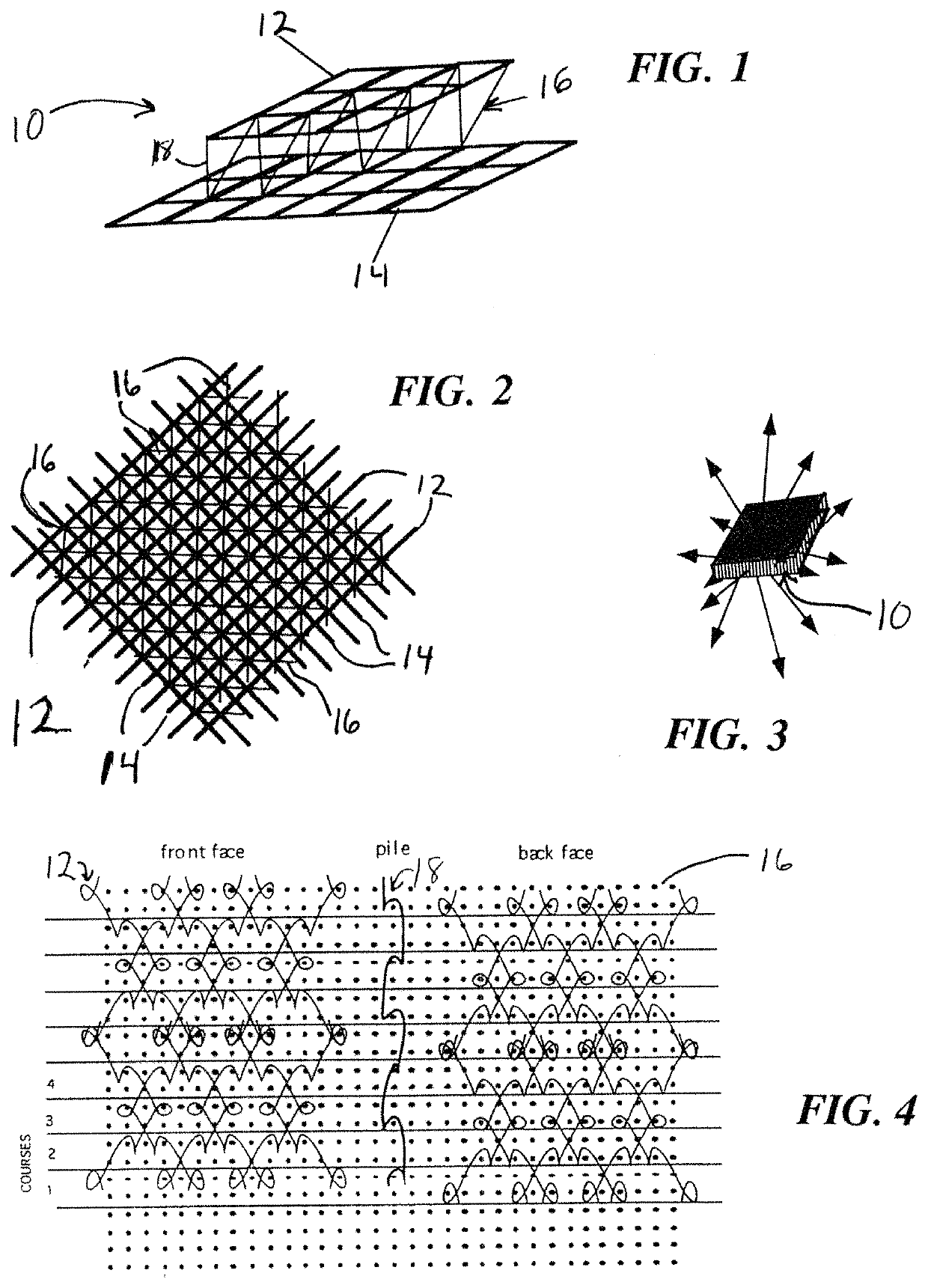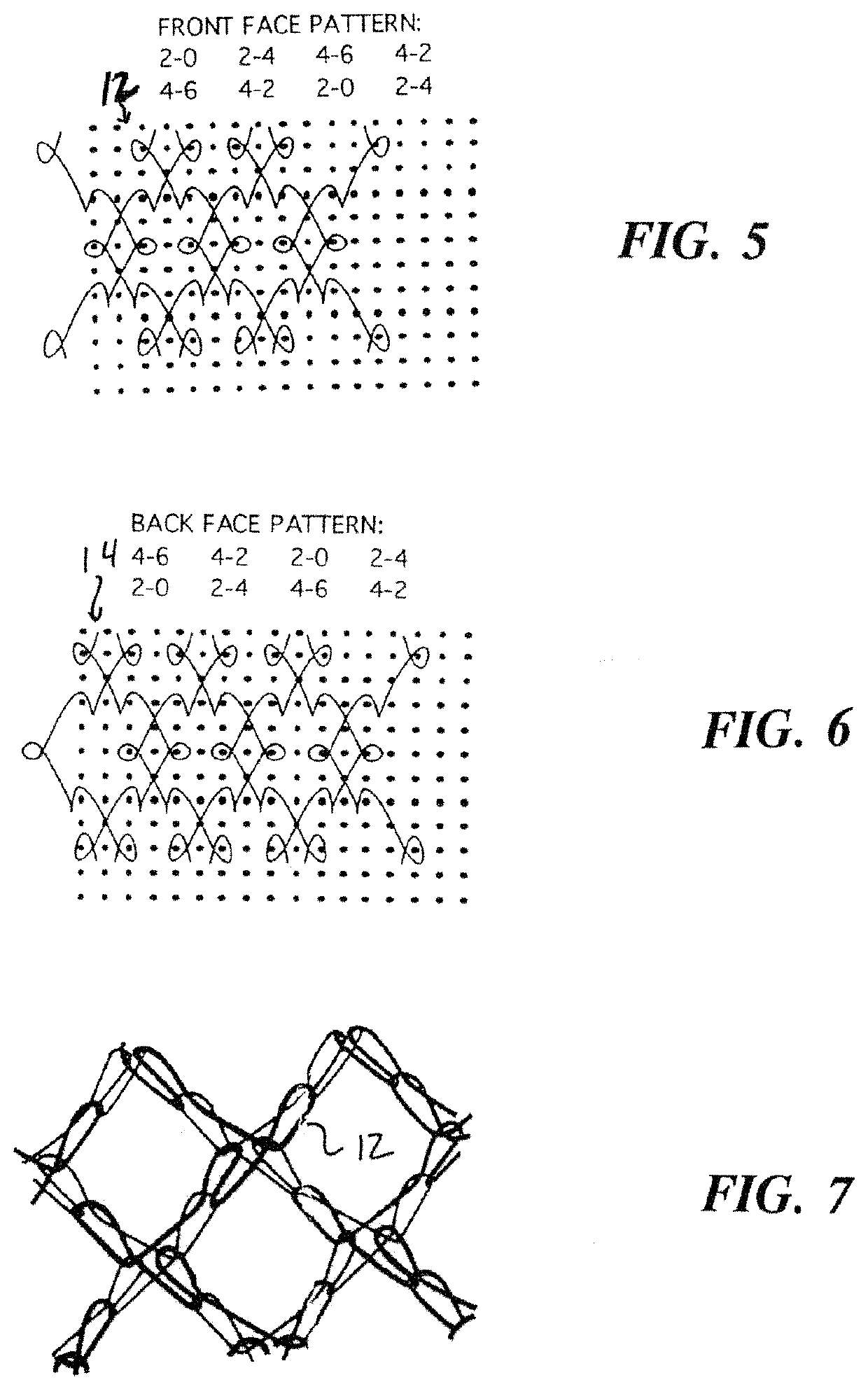Three-dimensional, knitted, multi-spectral electro-magnetic detection resistant, camouflaging textile
a technology of electro-magnetic detection and camouflage textiles, applied in knitting, ornamental textile articles, weaving, etc., can solve the problems of increasing the likelihood of detection by observers using thermal imaging sensors, not always providing effective concealment by attenuating thermal signatures, and becoming more difficult for qualitatively and quantitatively to detect and identify camouflaged subjects. , to achieve the effect of minimizing detection and being easy to handl
- Summary
- Abstract
- Description
- Claims
- Application Information
AI Technical Summary
Benefits of technology
Problems solved by technology
Method used
Image
Examples
Embodiment Construction
lass="d_n">[0043]In FIG. 1 a camouflaging textile 10 according to the invention is depicted. The textile 10 is a fabric material relying primarily on its geometry for multi-spectral electromagnetic radiation camouflaging effects. The textile fabric 10 including an upper generally planar sheet 12 formed of a fabric that can be knit, woven or formed of bonded fibers and a second, lower generally planar sheet 14 of selected fabric. Preferably, the fabric is woven or knit. For reference orientation purposes herein, upper sheet refers to that sheet subject to exposure and lower sheet refers to that face of the textile closest to the underlying, concealed area / objects.
[0044]The upper sheet 12 and lower sheet 14 are substantially parallel and are connected to each other by a third interposed layer 16 formed from an intertwined yarn / pile 18 which possess adequate stiffness to maintain a substantially constant spacing between the first and second sheet. The pile yarn 18 serves to preserve th...
PUM
| Property | Measurement | Unit |
|---|---|---|
| electromagnetic detection resistance | aaaaa | aaaaa |
| optical characteristics | aaaaa | aaaaa |
| dimensions | aaaaa | aaaaa |
Abstract
Description
Claims
Application Information
 Login to View More
Login to View More - R&D
- Intellectual Property
- Life Sciences
- Materials
- Tech Scout
- Unparalleled Data Quality
- Higher Quality Content
- 60% Fewer Hallucinations
Browse by: Latest US Patents, China's latest patents, Technical Efficacy Thesaurus, Application Domain, Technology Topic, Popular Technical Reports.
© 2025 PatSnap. All rights reserved.Legal|Privacy policy|Modern Slavery Act Transparency Statement|Sitemap|About US| Contact US: help@patsnap.com


